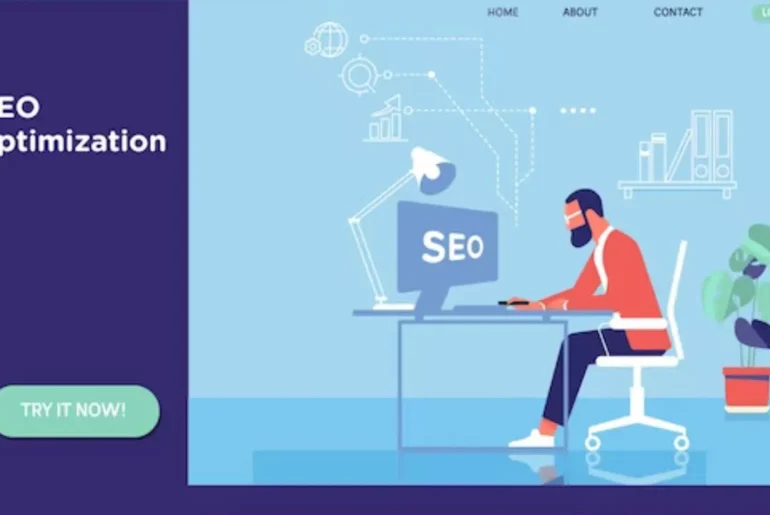"Want to rank higher on Google? Discover Adobe Experience Manager SEO capabilities."
Adobe Experience Manager SEO is important for your Online presence. So first discuss about what is Adobe Experience Manager, AEM’s SEO and how it benefits you for your online presence.
What is Adobe Experience Manager?
Adobe Experience Manager (AEM) is a comprehensive content management solution that allows organizations to create, manage, and deliver digital experiences across various channels. SEO (Search Engine Optimization) is an important aspect of digital marketing, and AEM provides features and capabilities that can help improve SEO for your website or digital properties.
Key Advantages of Adobe Experience Manager
Adobe Experience Manager (AEM) offers a wide range of benefits for organizations looking to manage and deliver digital experiences effectively. Here are some of the key advantages of using AEM:
AEM provides one central location for creating, managing, and delivering content across multiple mediums, such as websites, mobile apps, email campaigns, and more. It simplifies content authoring and allows teams to collaborate on content development more easily.
Personalization: You may build and deliver personalized content to specific users or audience segments with AEM. Because information can be personalized to unique user interests and behaviors, personalization can boost user engagement and conversion rates.
AEM facilitates content delivery across many digital touchpoints, enabling a uniform and optimized user experience on desktop, mobile, and other devices. It helps organizations in adapting to the changing landscape of online platforms.
AEM provides tools for optimizing content for search engines, including as SEO-friendly URLs, metadata management, and XML sitemaps. This can help increase the visibility of a website in search engine results.
Scalability: Because AEM is built to manage huge volumes of content and traffic, it is appropriate for enterprise-level applications. It may expand according to rising content and user demands.
Asset Management: AEM includes digital asset management capabilities, allowing organizations to store, organize, and manage rich media assets such as photographs and videos in an efficient manner. It also includes tools for media content optimization and delivery.
AEM includes safety features that protect against unauthorized access and data breaches. It is customizable to satisfy security and regulatory standards.
Quick Time-to-Market: AEM’s user-friendly interface and customizable templates allow for speedier content generation and installation, allowing enterprises to respond to changing market conditions more quickly.
Responsive design and mobile app development are provided by AEM, ensuring that digital experiences are optimized for mobile users.
Adobe provides a community of users and developers, as well as substantial documentation and tools, to assist businesses in making the most of AEM.

Adobe Experience Manager SEO practices
Optimize Content for Keywords
- Conduct thorough keyword research in order to find relevant and high-traffic keywords.
- Make careful use of these keywords in your content, including headings, body text, and metadata.
URL Structure
- Create keyword-rich URLs that are clear and meaningful.
- To improve readability and SEO, use hyphens to separate words in URLs.
Metadata
- Use appropriate keywords to enhance metadata, such as title tags and meta descriptions.
- Make sure each page has an engaging meta description that is unique.
Mobile Optimization
- Make sure your AEM website works well on mobile devices and offers an outstanding user experience across all platforms.
- Mobile-friendly websites appear higher in search results on Google.
Site Speed
- Improve the performance of your AEM website for quick loads.
- Reduce the number of HTTP queries, use browser caching, and compress pictures.
Content Hierarchy
- Use headings (H1, H2, H3, etc.) to arrange your information in an orderly manner.
- To make your material easier for search engines to understand, use schema markup, or structured data.
Internal Linking
- Make an internal linking structure that makes sense to direct people and search engines to relevant content.
- Make sure the anchor text is informative and, when necessary, includes keywords.
XML Sitemaps
Create and upload XML sitemaps to search engines so they can more effectively index your website.
Robots.txt and Robots Meta Tags
You can control which pages search engines can crawl and index by using robots.txt and robots meta tags.
Local SEO (if applicable)
If your company has physical locations, use location-specific keywords and create Google My Business profiles to optimize for local search.
Mobile-First Indexing
Make sure your website is ready for Google’s mobile-first indexing, since the search engine primarily ranks and indexes material on mobile devices.
301 Redirects
To maintain link ownership, use 301 redirects appropriately when rearranging URLs or eliminating pages.
Measuring Adobe Experience Manager SEO Sucess
Tracking important data like organic traffic growth, keyword ranks, and conversion rates will help determine how successful AEM SEO is. You can optimize your AEM SEO strategy by identifying areas for improvement and making data-driven decisions by constantly tracking
There are a number of tools that can be used to measure AEM SEO success. Some of the most popular tools include:
Google Search Console: This tool provides data on organic traffic, keyword rankings, and click-through rates.
Ahrefs: This tool provides data on backlink profiles, keyword rankings, and organic traffic.
SEMrush: This tool provides data on keyword rankings, organic traffic, and competitor analysis.
Moz: This tool provides data on keyword rankings, backlink profiles, and technical SEO audits.
By using these tools, you can track your AEM SEO performance over time and make data-driven decisions to improve your results.

Traditional SEO Vs. AEM SEO
The goal of both traditional SEO and AEM SEO is to increase a website’s exposure in search engine results pages (SERPs). These two strategies differ in a few significant ways.
Due of its more manual nature, traditional SEO requires a thorough comprehension of search engine algorithms and how they rank websites. Usually, it entails producing excellent content, constructing backlinks to the website, and improving the technical and structural elements of the website.
Using the features of Adobe Experience Manager (AEM), a potent content management system (CMS), AEM SEO makes SEO work easier and more efficient. Implementing SEO best practices is made simpler by AEM’s built-in capabilities for technical SEO, metadata management, and content optimization.
AEM SEO for Ecommerce
The practice of improving an e-commerce website created with Adobe Experience Manager (AEM) to rank higher in search engine results pages (SERPs) and draw in more organic traffic is known as AEM SEO for e-commerce. Ecommerce companies may improve their website visibility, generate more qualified leads, and increase sales by putting AEM SEO best practices into effect.
Keyword research: Identify relevant keywords that your target audience is searching for and use them throughout your website, including product descriptions, page titles, and meta descriptions.
Content optimization: Create high-quality, informative, and engaging content that is optimized for your target keywords.
Technical SEO: Ensure that your website is technically sound and easy for search engines to crawl and index.
Link building: Build high-quality backlinks to your website from other high-quality websites.
On-page SEO: Optimize your website’s on-page elements, such as titles, meta descriptions, headers, and image alt tags.
Mobile optimization: Ensure that your website is mobile-friendly, as more and more people are using mobile devices to search for products and services.
Conclusion
In conclusion, (AEM) Adobe Experience Manager SEO is a critical aspect of any websites that seeks a success in the digital world. By implementing effective SEO strategies, AEM websites can get benefit greater organic traffic, enhanced brand recognition, a more satisfying user experience, and reduced reliance on paid advertising. With its strong capabilities, AEM streamlines SEO efforts and empowers businesses to achieve their online marketing goals.





